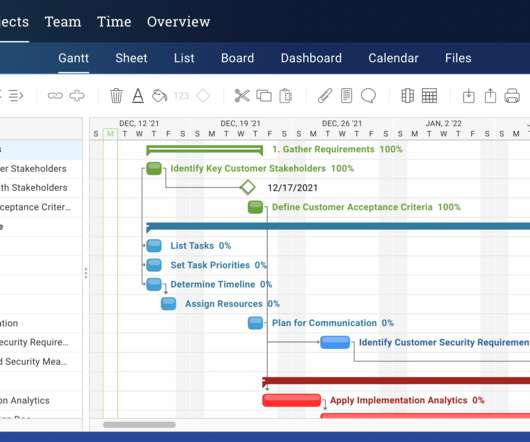Six Sigma: A Simple Guide for Project Managers
ProjectManager.com
JUNE 28, 2018
It can mean different things within various organizations or circumstances, but there is a way to broadly outline this business process improvement methodology and define its beginnings, its, rise, its use and its implementation. As noted, it’s a methodology used to improve the quality of an output in a process. Leadership is critical.

















Let's personalize your content